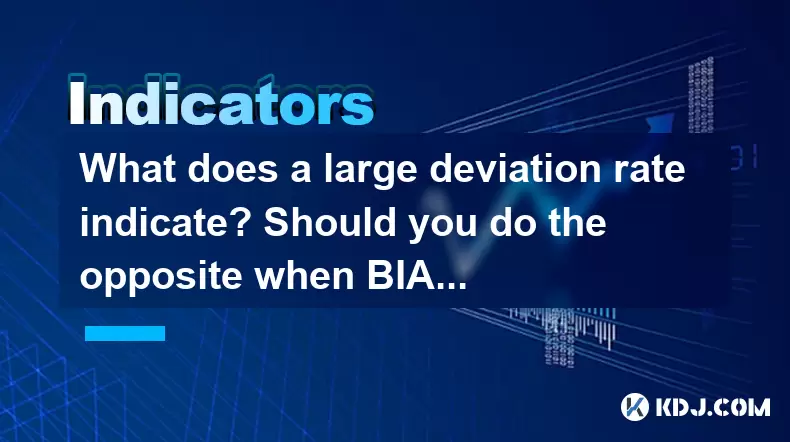-
 Bitcoin
Bitcoin $119900
0.91% -
 Ethereum
Ethereum $4576
8.55% -
 XRP
XRP $3.264
4.05% -
 Tether USDt
Tether USDt $0.9998
-0.05% -
 BNB
BNB $834.7
4.17% -
 Solana
Solana $191.8
9.96% -
 USDC
USDC $0.9998
-0.02% -
 Dogecoin
Dogecoin $0.2363
6.08% -
 TRON
TRON $0.3525
2.56% -
 Cardano
Cardano $0.8419
9.12% -
 Chainlink
Chainlink $23.19
9.97% -
 Hyperliquid
Hyperliquid $44.97
4.53% -
 Stellar
Stellar $0.4489
4.20% -
 Sui
Sui $3.876
6.19% -
 Bitcoin Cash
Bitcoin Cash $618.1
7.14% -
 Hedera
Hedera $0.2617
6.55% -
 Ethena USDe
Ethena USDe $1.000
-0.03% -
 Avalanche
Avalanche $24.61
7.96% -
 Litecoin
Litecoin $131.7
9.52% -
 Toncoin
Toncoin $3.502
3.62% -
 UNUS SED LEO
UNUS SED LEO $9.093
1.32% -
 Shiba Inu
Shiba Inu $0.00001358
5.37% -
 Uniswap
Uniswap $11.50
5.05% -
 Polkadot
Polkadot $4.150
7.77% -
 Dai
Dai $0.9997
-0.05% -
 Cronos
Cronos $0.1650
-0.75% -
 Ethena
Ethena $0.7981
2.06% -
 Pepe
Pepe $0.00001216
8.64% -
 Bitget Token
Bitget Token $4.467
1.74% -
 Aave
Aave $319.2
9.18%
What does a large deviation rate indicate? Should you do the opposite when BIAS reverts to the mean?
Large deviation rates and BIAS can signal potential price reversals in cryptocurrency; use them together for a comprehensive market analysis.
Jun 09, 2025 at 03:56 am

Understanding the Large Deviation Rate in Cryptocurrency
In the world of cryptocurrencies, understanding market indicators is crucial for making informed trading decisions. One such indicator is the deviation rate, which measures how far a cryptocurrency's price has moved from its average value over a specified period. When the deviation rate is large, it indicates significant volatility and a potential shift in market sentiment.
A large deviation rate can signal that the market is overbought or oversold. If the rate is positive, it suggests that the price is significantly higher than the average, indicating an overbought condition. Conversely, a negative large deviation rate indicates that the price is much lower than the average, suggesting an oversold condition. Traders often use this information to anticipate potential price reversals.
The Role of BIAS in Cryptocurrency Trading
BIAS, or the Bollinger Band Indicator Average, is another important tool used by cryptocurrency traders. It measures the percentage difference between the closing price of a cryptocurrency and its moving average. When BIAS is high, it indicates that the price is far above the moving average, and when it is low, the price is far below the moving average.
Traders use BIAS to gauge the strength of a trend and to identify potential reversal points. A high BIAS value might suggest that the market is due for a correction, while a low BIAS value could indicate that the market might soon see an upward movement.
Should You Do the Opposite When BIAS Reverts to the Mean?
The concept of mean reversion is central to many trading strategies. When BIAS reverts to the mean, it means that the price is returning to its average value after being either significantly higher or lower. The question of whether to do the opposite when BIAS reverts to the mean depends on the trader's strategy and risk tolerance.
Some traders believe in taking a contrarian approach, buying when the market is oversold (BIAS is low and reverting to the mean) and selling when the market is overbought (BIAS is high and reverting to the mean). This strategy is based on the idea that the market will eventually correct itself, and prices will return to their average.
However, not all traders follow this approach. Some prefer to wait for confirmation signals, such as a change in trend or a breakout, before making a move. The decision to do the opposite when BIAS reverts to the mean should be based on a comprehensive analysis of market conditions and the trader's overall strategy.
Analyzing Large Deviation Rates and BIAS Together
Combining the analysis of large deviation rates and BIAS can provide a more comprehensive view of the market. When a cryptocurrency experiences a large deviation rate, and BIAS is also significantly high or low, it can signal a strong potential for a price reversal.
For instance, if a cryptocurrency has a large positive deviation rate and a high BIAS value, it might be overbought, and a price correction could be imminent. Conversely, if the deviation rate is large and negative, and BIAS is low, the market might be oversold, suggesting a potential upward movement.
Practical Application of Large Deviation Rates and BIAS
To apply the concepts of large deviation rates and BIAS in your trading strategy, follow these steps:
Identify the Deviation Rate: Calculate the deviation rate by comparing the current price of the cryptocurrency to its moving average over a specific period. A large deviation rate indicates significant volatility.
Monitor BIAS: Calculate the BIAS by measuring the percentage difference between the closing price and the moving average. A high BIAS value suggests the market is overbought, while a low BIAS value indicates an oversold condition.
Analyze Together: Look for instances where the deviation rate is large and BIAS is either significantly high or low. These conditions can signal potential price reversals.
Consider Mean Reversion: When BIAS reverts to the mean, consider whether to take a contrarian approach based on your analysis of the market conditions and your overall trading strategy.
Confirm with Other Indicators: Use additional technical indicators, such as RSI (Relative Strength Index) or MACD (Moving Average Convergence Divergence), to confirm your analysis and increase the reliability of your trading signals.
FAQs
1. How can I calculate the deviation rate for a cryptocurrency?
To calculate the deviation rate, you need to determine the moving average of the cryptocurrency's price over a specific period. Subtract the moving average from the current price, and then divide the result by the moving average. Multiply the outcome by 100 to get the percentage deviation rate. A large deviation rate indicates significant volatility.
2. What is the significance of BIAS in cryptocurrency trading?
BIAS, or the Bollinger Band Indicator Average, measures the percentage difference between the closing price of a cryptocurrency and its moving average. It helps traders gauge the strength of a trend and identify potential reversal points. A high BIAS value indicates an overbought market, while a low BIAS value suggests an oversold market.
3. Can BIAS be used alone for trading decisions?
While BIAS is a valuable indicator, it should not be used alone for trading decisions. It is best used in conjunction with other technical indicators, such as the deviation rate, RSI, and MACD, to confirm trading signals and increase the reliability of your analysis.
4. What are the risks of trading based on mean reversion?
Trading based on mean reversion involves the risk of false signals and market continuation. If the market does not revert to the mean as expected, traders can incur losses. It is essential to use additional indicators and confirm signals before making trading decisions based on mean reversion.
Disclaimer:info@kdj.com
The information provided is not trading advice. kdj.com does not assume any responsibility for any investments made based on the information provided in this article. Cryptocurrencies are highly volatile and it is highly recommended that you invest with caution after thorough research!
If you believe that the content used on this website infringes your copyright, please contact us immediately (info@kdj.com) and we will delete it promptly.
- Unich's OTC Exchange: Surging with $1.2B Volume – What's the Hype?
- 2025-08-13 02:50:11
- MoonBull's Explosive Moves: Your Crypto Whitelist Ticket to Ride!
- 2025-08-13 02:30:11
- MAGACOIN Finance: Don't Miss the Presale Bonus!
- 2025-08-13 02:30:11
- Trump's Crypto Kingdom: $2.4 Billion and Counting
- 2025-08-13 02:50:11
- Solana, LSTs, and SEC Approval: A New Dawn for Crypto?
- 2025-08-13 02:55:12
- Bitcoin's Profit Surge: Unpacking the BTC Value Boom
- 2025-08-13 02:55:12
Related knowledge

What does it mean when the +DI and -DI cross frequently in the DMI indicator but the ADX is flattening?
Aug 11,2025 at 03:15am
Understanding the DMI Indicator ComponentsThe Directional Movement Index (DMI) is a technical analysis tool composed of three lines: the +DI (Positive...

What does it mean when the moving average, MACD, and RSI all send buy signals simultaneously?
Aug 11,2025 at 01:42pm
Understanding the Convergence of Technical IndicatorsWhen the moving average, MACD, and RSI all generate buy signals at the same time, traders interpr...

What does it mean when the price is trading above the SAR indicator but the red dots are densely packed?
Aug 09,2025 at 11:49pm
Understanding the SAR Indicator and Its Visual SignalsThe SAR (Parabolic Stop and Reverse) indicator is a technical analysis tool used primarily to de...

What does it mean when the candlestick chart forms a "Morning Star" but trading volume is sluggish?
Aug 12,2025 at 06:28pm
Understanding the Morning Star Candlestick PatternThe Morning Star is a three-candle bullish reversal pattern commonly observed in cryptocurrency pric...

What does it mean when the RSI indicator moves sideways for an extended period between 40 and 60?
Aug 10,2025 at 08:08am
Understanding the RSI Indicator in Cryptocurrency TradingThe Relative Strength Index (RSI) is a momentum oscillator widely used in cryptocurrency trad...

What does it mean when the MACD histogram continues to shorten but the price reaches a new high?
Aug 09,2025 at 09:29pm
Understanding the MACD Histogram and Its ComponentsThe MACD (Moving Average Convergence Divergence) indicator is a widely used technical analysis tool...

What does it mean when the +DI and -DI cross frequently in the DMI indicator but the ADX is flattening?
Aug 11,2025 at 03:15am
Understanding the DMI Indicator ComponentsThe Directional Movement Index (DMI) is a technical analysis tool composed of three lines: the +DI (Positive...

What does it mean when the moving average, MACD, and RSI all send buy signals simultaneously?
Aug 11,2025 at 01:42pm
Understanding the Convergence of Technical IndicatorsWhen the moving average, MACD, and RSI all generate buy signals at the same time, traders interpr...

What does it mean when the price is trading above the SAR indicator but the red dots are densely packed?
Aug 09,2025 at 11:49pm
Understanding the SAR Indicator and Its Visual SignalsThe SAR (Parabolic Stop and Reverse) indicator is a technical analysis tool used primarily to de...

What does it mean when the candlestick chart forms a "Morning Star" but trading volume is sluggish?
Aug 12,2025 at 06:28pm
Understanding the Morning Star Candlestick PatternThe Morning Star is a three-candle bullish reversal pattern commonly observed in cryptocurrency pric...

What does it mean when the RSI indicator moves sideways for an extended period between 40 and 60?
Aug 10,2025 at 08:08am
Understanding the RSI Indicator in Cryptocurrency TradingThe Relative Strength Index (RSI) is a momentum oscillator widely used in cryptocurrency trad...

What does it mean when the MACD histogram continues to shorten but the price reaches a new high?
Aug 09,2025 at 09:29pm
Understanding the MACD Histogram and Its ComponentsThe MACD (Moving Average Convergence Divergence) indicator is a widely used technical analysis tool...
See all articles

























































































